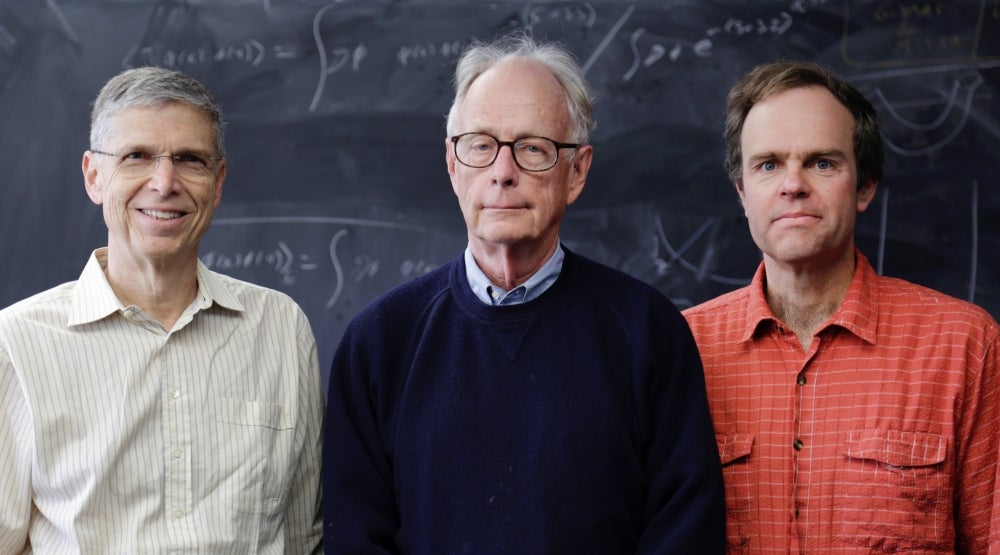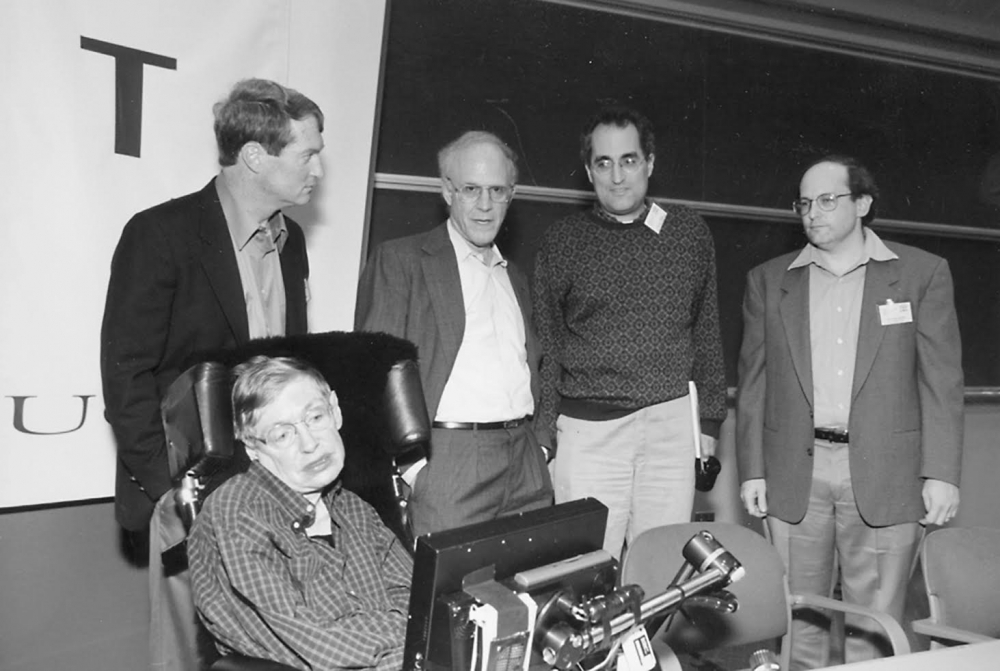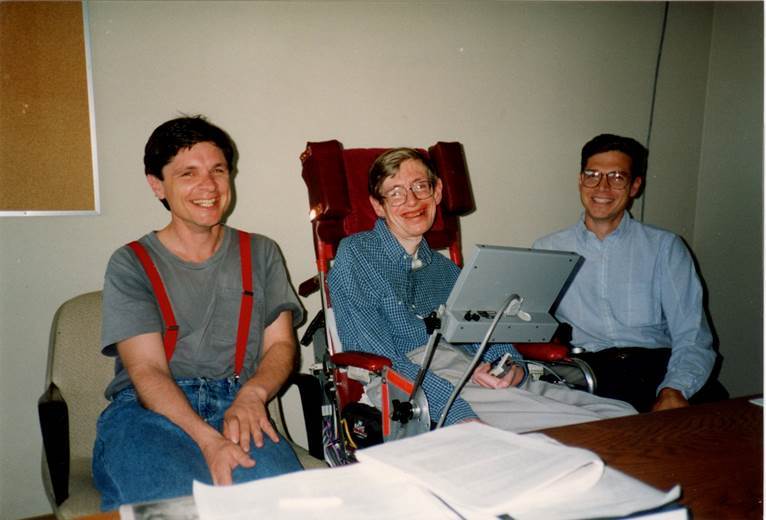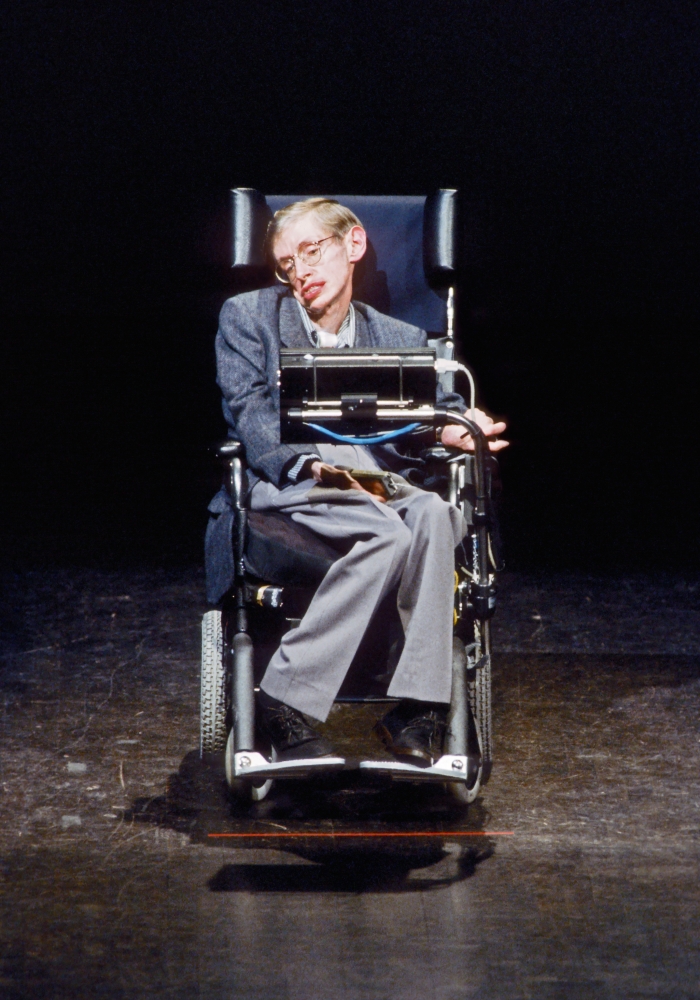Remembering Stephen Hawking

Stephen Hawking, who died Mar. 14 — Albert Einstein’s birthday and Pi Day — had a brilliant mind and a puckish sense of humor.
Gary Horowitz experienced it firsthand. Now a UC Santa Barbara physicist, Horowitz was a postdoctoral scholar when Hawking invited him to Cambridge for six weeks. At a social gathering, Horowitz recalled, Hawking was the life of the party, telling jokes and proffering puzzles for people to solve.
In a later visit to Cambridge, Horowitz saw up close Hawking’s memory at work.
“Stephen was of course the Lucasian Professor of Physics, a chair held by Isaac Newton, and he was explaining this to me and he proceeded to say, ‘Well I’m the current Lucasian Professor.’ Then Stephen just proceeded over tea to recite and tell me every single Lucasian Professor of Physics back to Newton. He just knew them all.”
Other UC Santa Barbara physicists who worked with Hawking also remember him for his sociability and recall, but, more importantly, for his keen insights into theoretical physics.
“It was the totality of the interactions with Stephen that was the important thing for me,” said James Hartle, who worked with Hawking for decades. Among their many collaborations, the best known is a theory of the beginning of the universe. “Appreciating his keen insight into physics, the fact that he knew the right question to ask, the fact that he knew what to give up to provide an answer to that question, which was just as a hard as knowing the right question; his love of surprises.
“Stephen knew both what was the right question to ask and what’s the thing to give up, like black holes aren’t black,” Hartle continued, in this case referring to Hawking’s discovery that black holes can radiate and become smaller. “To have somebody like that — of course, it was a pleasure to work with him — you really make progress much faster than staggering around wondering.”
Hawking’s relationship with UC Santa Barbara was longstanding, beginning in the 1980s. For many years, he was a regular visitor to campus. In 1994, Hartle, then director of the campus’s Kavli Institute for Theoretical Physics, launched a public lecture series to make physics accessible to a broad audience. Invited by Hartle to give the inaugural talk, Hawking did exactly that. He spoke to a capacity crowd at Campbell Hall.
“We worked together on a number of different things, black holes and various ideas,” Hartle said of Hawking. “But probably the main thing that we’re known for is the quantum mechanical story at the beginning of the universe. Thanks to work by Stephen and Roger Penrose, the equations of classical physics are known to break down as you extrapolate them backward in time to the Big Bang. Something has to replace the classical equations there to have a complete theory of physics. Quantum mechanics is the likely culprit. But if the universe is a quantum mechanical system, it has a wave function. Stephen and I proposed one particular wave function of the universe, which agrees with the experiment and observations. That wave function is a theory of the beginning of the universe.”
“Stephen’s achievements were spectacular,” Horowitz said. “His discovery of the black hole radiation has really dominated an area of theoretical physics for 40 years. It has raised very deep questions that we are still trying to answer.”
With an exchange program that brought Hawking’s students to UC Santa Barbara and sent UC Santa Barbara students to study with his group at Cambridge, Hawking had a direct impact on the study of physics at the Santa Barbara campus.
“He added directly to the UCSB physics experience and to the experience of our students and postdocs after they left UCSB,” said physics department chair Don Marolf. “Hawking taught us all to keep our eye on the big picture and ask the big questions and try to look for full answers.”
Added Horowitz: “I just think he’s such an inspiration. He had all these hardships in life and he didn’t give up or wallow in self-pity. He just kept pushing forward and doing what he wanted to do. He loved physics; he wanted to talk to physicists; he wanted to keep interactions. In addition to all the great insights he’s given us, he’s just been a great inspiration to keep going and pursue our dream of understanding nature.”






